These exercises are to be completed 7 days after your surgery or once all your drains have been removed (if you have required your drains for more than 7 days). We recommend that these exercises are completed lying on your back with your knees bent unless indicated otherwise. This can be on a bed with a pillow under your head. You should aim to complete these exercise 3 times daily.
All these exercises should be done within the limits of your pain although it is common to feel a pulling sensation when performing these exercises and some temporary discomfort afterwards. Do not push your movement past the point where you feel a pulling sensation.
Exercise 1 – Lifting your arm forwards
Lift your arms up to point to ceiling and link your hands together. Slowly bring your arms backwards over your head, keeping your elbows straight as far as you feel happy to go.
Hold for 5 seconds then return your arms to the starting position and repeat 5 times.
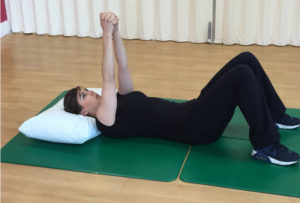
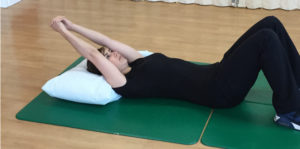
Exercise 2- Lifting your arm out to the side
With your arm resting on the bed beside you, turn your palm to face the ceiling. Slowly glide your arm sideways and upwards toward your ear, keeping your elbow straight. You may feel a pulling sensation across your chest or in your armpit however, this is not harmful.
Hold for 5 seconds then glide your arm downwards to return to the starting position.
Repeat 5 times.
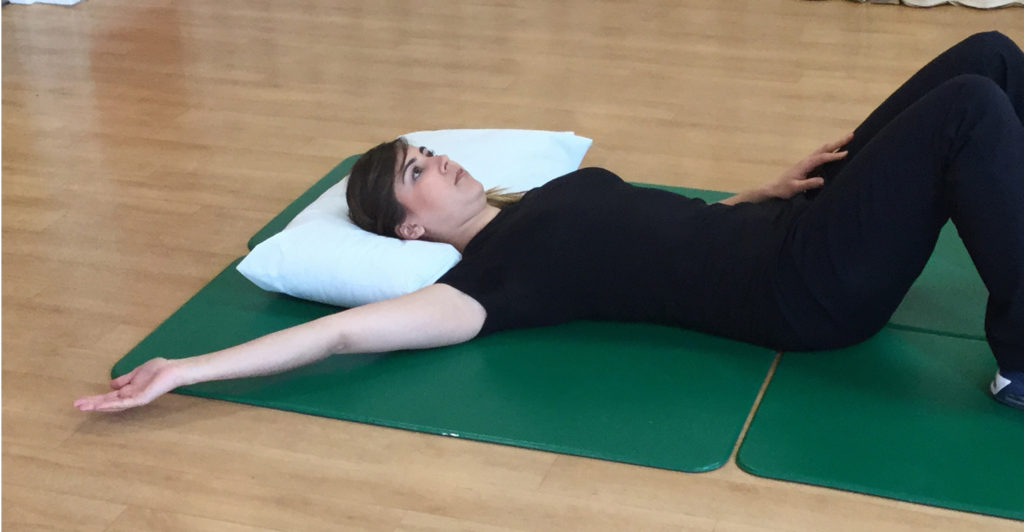
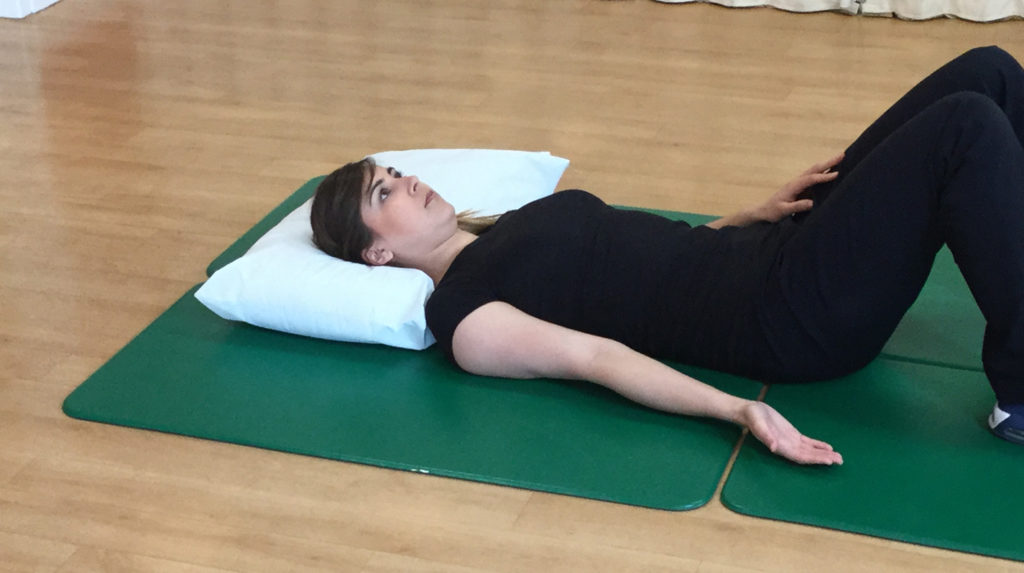
Exercise 3- Hands behind your head
Bend your elbows to allow your hands to reach behind your head. Slowly push your elbows backwards. You may feel a pulling sensation across your chest or in your armpit however, this is not harmful.
Hold for 5 seconds and repeat 5 times
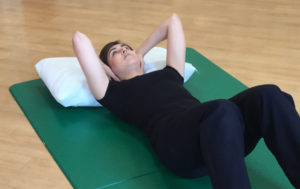
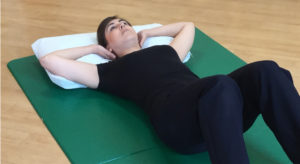
Exercise 4- Arm Circling
With your arm resting on the bed beside you, turn your palm to face the ceiling. Slowly bring your arm out sideways, upwards and across your body to create a small circle. Try to keep your elbow straight during this exercise. You may feel a pulling sensation across your chest or in your armpit however, this is not harmful.
Repeat 5 times, trying to create larger circles each time.
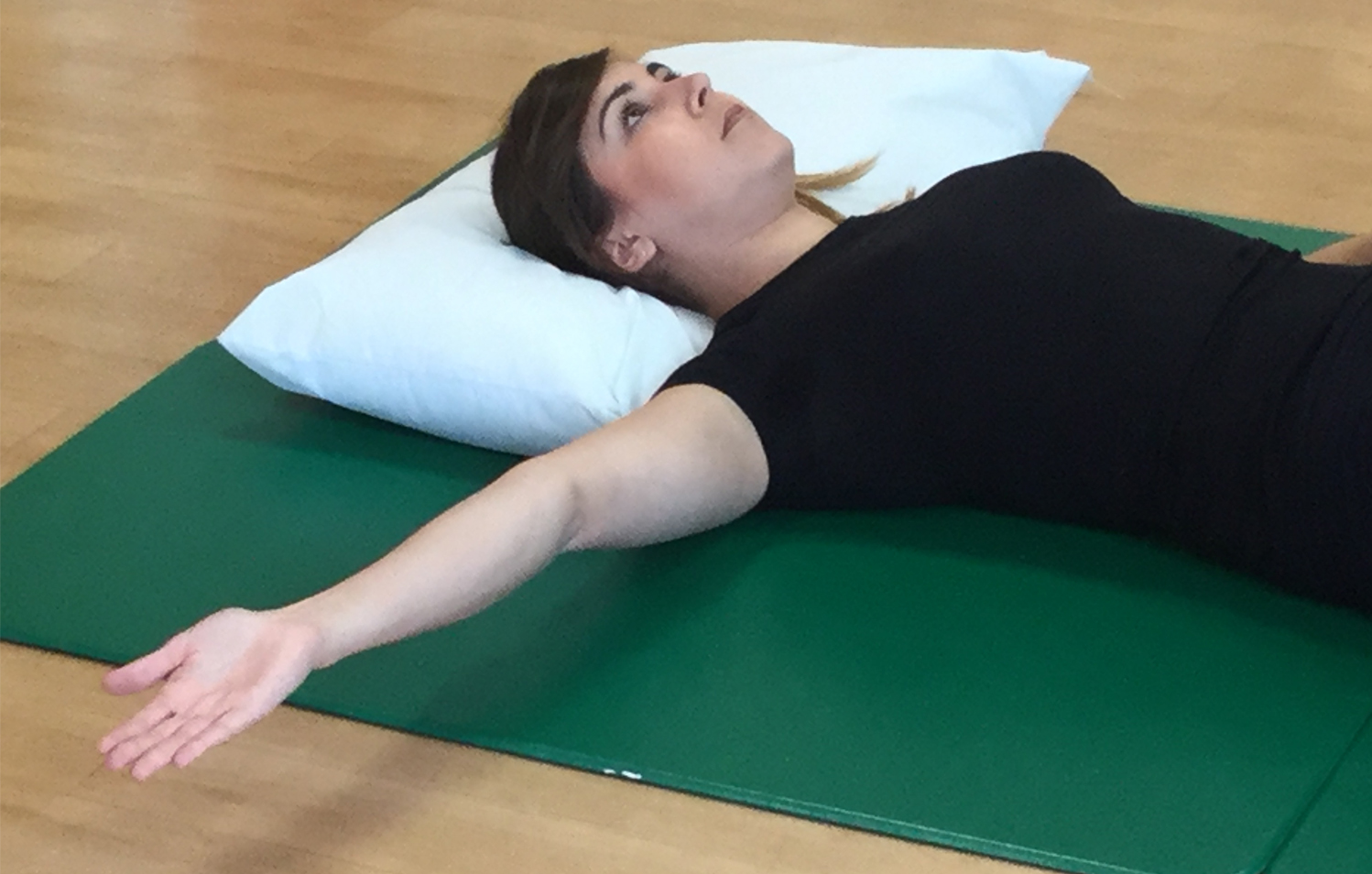
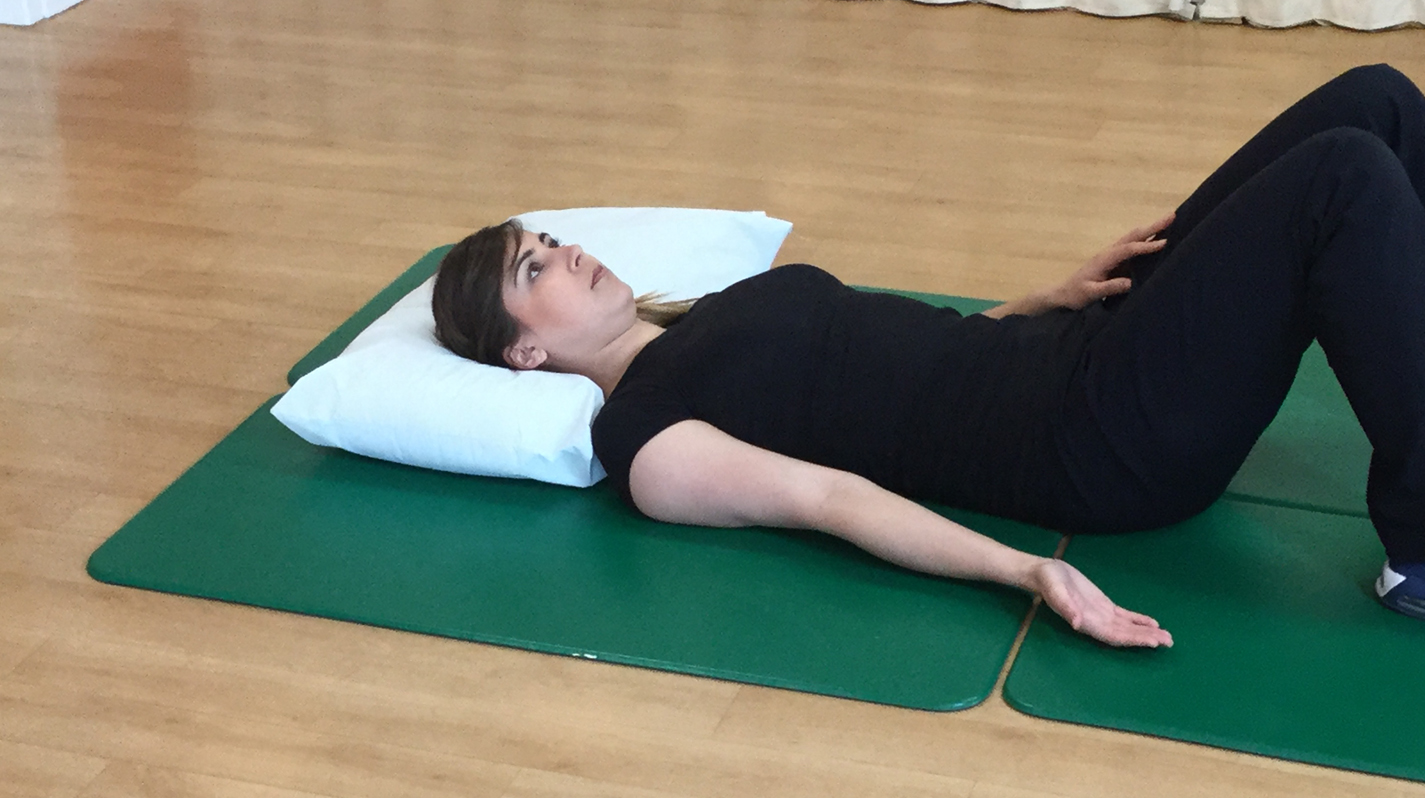
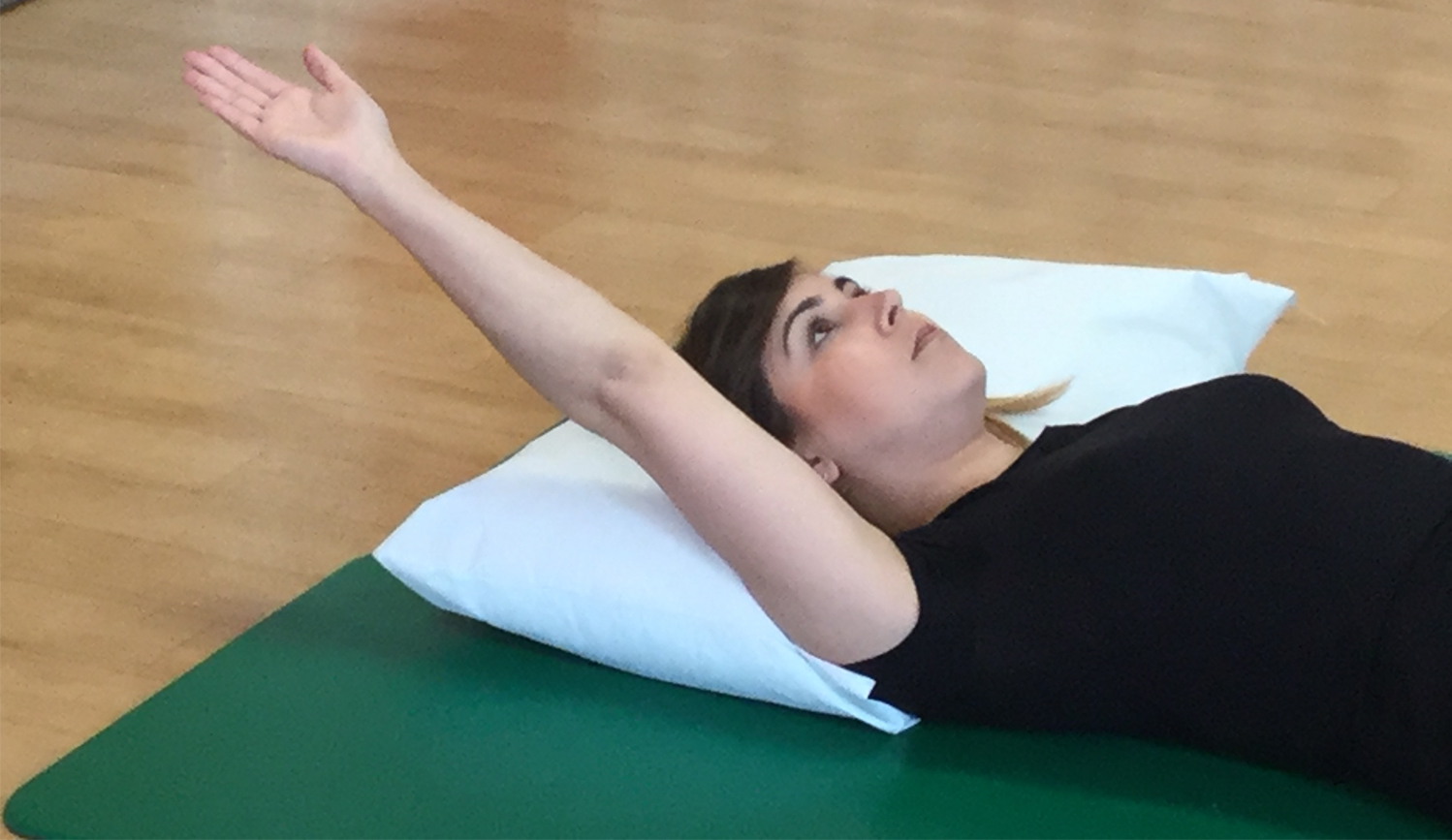
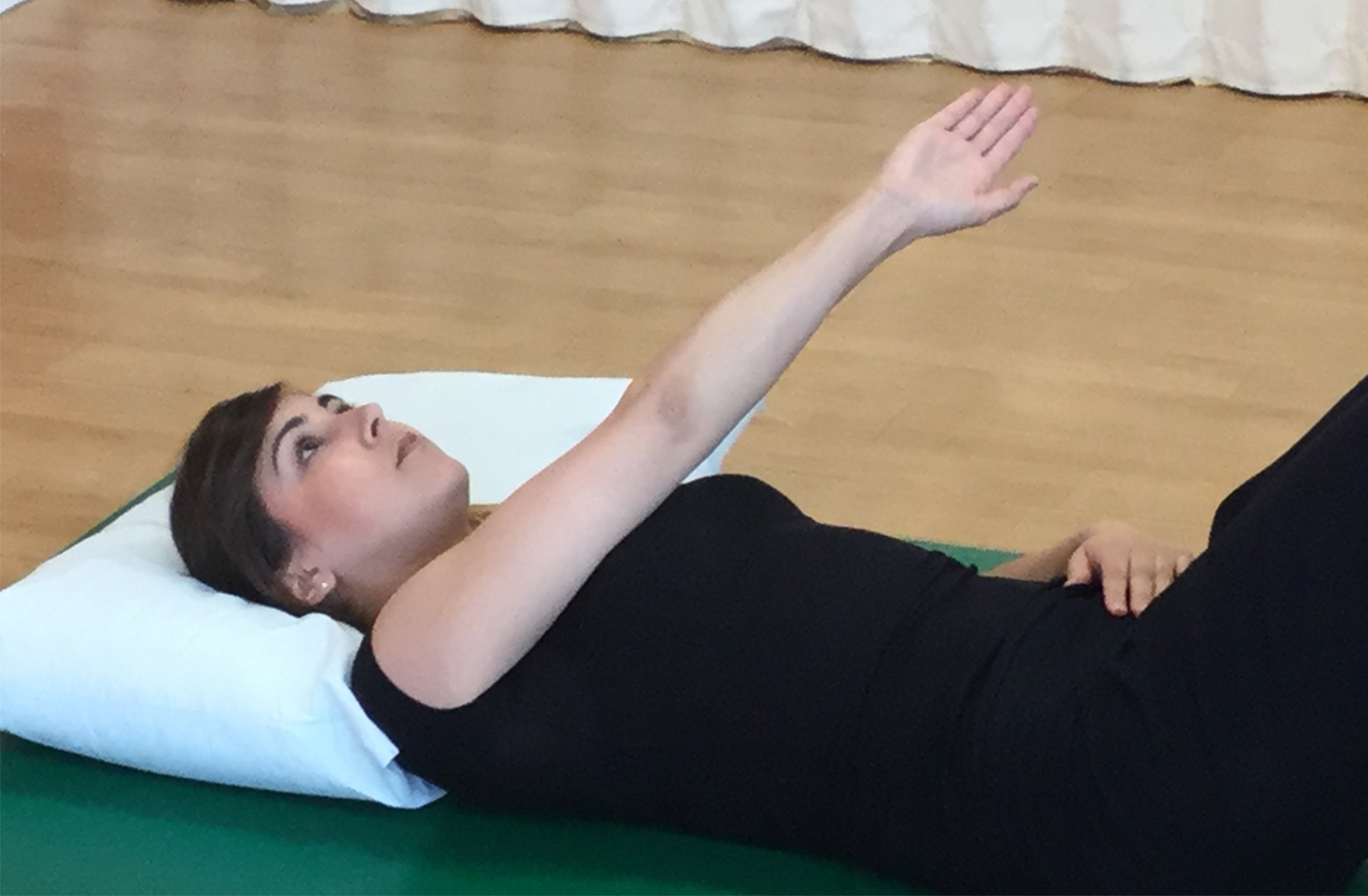
Exercise 5 - Pectoral Stretch
Stand tall with your arms resting down by your side. Slowly bring your affected arm backwards. You may feel a pulling sensation across the front of your chest or in your armpit however, this is not harmful.
Hold for 5 seconds then return to the starting position.
Repeat 5 times.

Exercise 6 - Deep Abdominals and Pelvic Floor Strengthening
Lying on your back, bend your knees to allow your feet to be flat on the bed. Gently bring your stomach in and hold, continuing to breathe normally. You may feel a tightening sensation across your stomach however, this is not harmful. Also try to gently squeeze and lift the muscles between your legs( as if you are stopping passing wind or urine). The sensation is one of closing and drawing up around the front and back passages. Hold for 5 seconds then relax back to starting position.
Repeat 5 times.

Exercises 2-3 weeks post op
7. Knee Rolling
Lying on your back, bend your knees to allow your feet to be flat on the bed. Slowly rock your knees to face one direction as far as you feel able to go. You may feel a pulling sensation across your chest, down your side or into your back however, this is not harmful.
Repeat 5 times in each direction.



Exercise 8 - Hip Hitching
Lying on your back, bend one of your knees to allow your foot to be flat on the bed and leave the other leg flat on the bed. Slowly slide your hip sideways and upwards towards your shoulder.
Hold for 5 seconds then gently slide your hip back to the starting position
Repeat 5 times on each side


Exercise 9 - Pelvic Tilting
Lying on your back, bend your knees to allow your feet to be flat on the bed. Gently bring your stomach in and slowly flatten your back against the bed. This is will allow your pelvis to tilt forwards.
Hold for 5 seconds then relax back to starting position.
Repeat 5 times.


Exercises for 4-6 weeks after surgery
It is expected that you will have full shoulder movement approximately 6-8 weeks after your surgery. These exercises are safe to complete 4-6 weeks after surgery to help your abdominal strength.
Exercise 1 – Bridging
Lying on your back, bend your knees to allow your feet to be flat on the bed. Gently bring in your stomach and raise your bottom off the bed. Try to create a straight line between your shoulders, hips and knees. You may feel a tightening sensation across your stomach however, this is not harmful.
Hold for 5 seconds then slowly lower back down to the starting position.
Repeat 5 times.


Exercise 2 - Gentle Stomach Stretching
Lie on your front with your arms by your side, elbows bent. Gently slide your arms forward until your elbows are underneath your shoulders. Slowly lift your chin and body to look upwards. You can link your hands together to create a fist to rest your chin on. You may feel a tightening sensation across your stomach however, this is not harmful.
Hold for 5-10 seconds then slowly lower back down to the starting position.
Repeat 5 times.

When you no longer feel a tightening sensation across your stomach when completing this exercise, progress to propping yourself up on your elbows.
Hold for 5-10 seconds then slowly lower back down to the starting position.
Repeast 5 times.

Should you have any concerns or worries about your exercises please contact the physiotherapists at the Nightingale Centre on 0161 291 4268.
It is expected that you will have full movement at your shoulder approximately 6-8 weeks after surgery.
You will attend a class 6-8 weeks after your surgery, as part of your continuing treatment. At this class, you will be shown your follow on physiotherapy exercises and be given advice on activity and exercise now and in the future. There is also information and advice on skin care, scars, cording, diet and how to reduce your risk of Lymphoedema. This session is an opportunity for you to ask questions of the rehabilitation team and learn how to access local services and support in the Manchester area.
If you are from outside the Manchester area we can help you to find support more locally to you. Please ask the team when you attend the class.